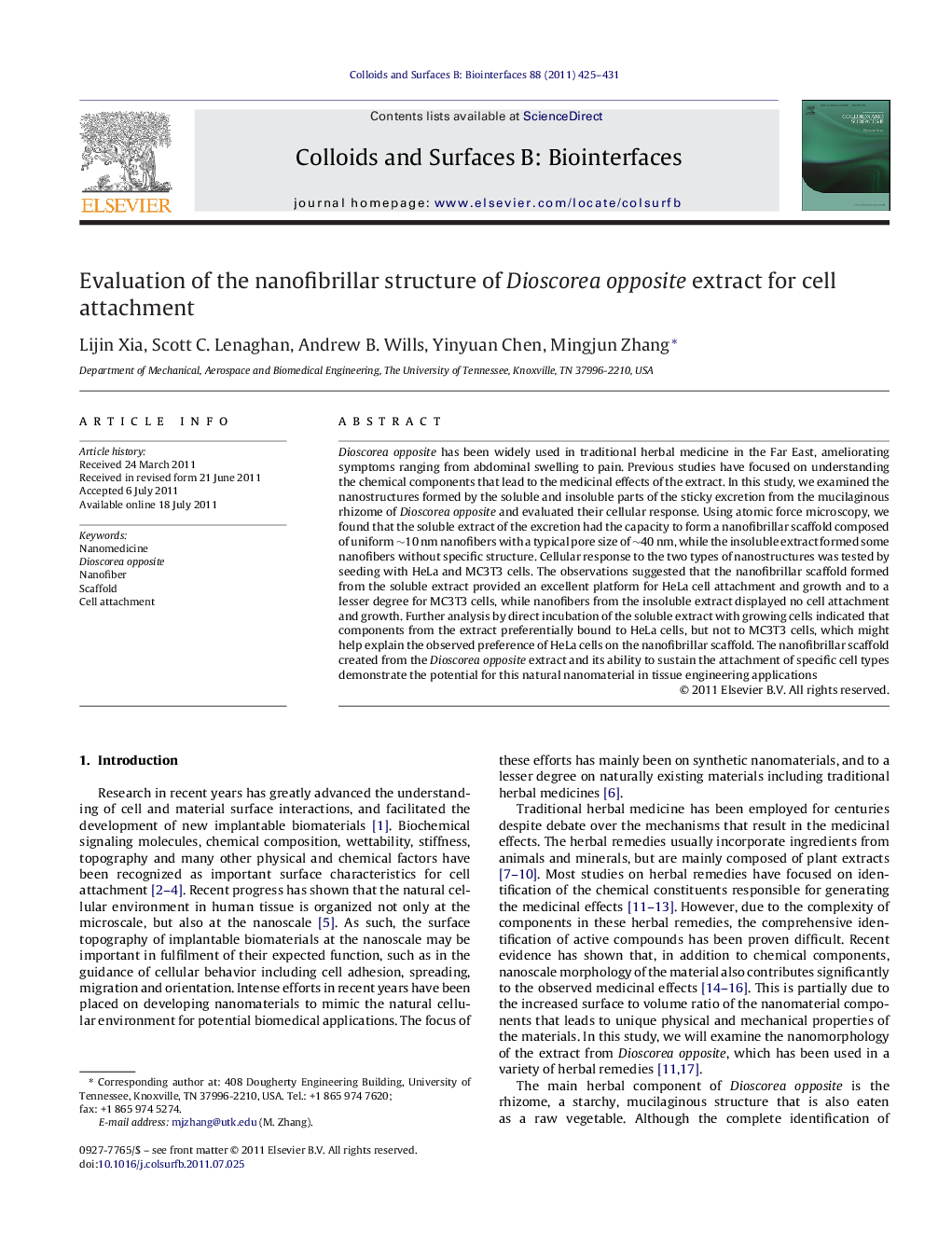| Article ID | Journal | Published Year | Pages | File Type |
|---|---|---|---|---|
| 601076 | Colloids and Surfaces B: Biointerfaces | 2011 | 7 Pages |
Dioscorea opposite has been widely used in traditional herbal medicine in the Far East, ameliorating symptoms ranging from abdominal swelling to pain. Previous studies have focused on understanding the chemical components that lead to the medicinal effects of the extract. In this study, we examined the nanostructures formed by the soluble and insoluble parts of the sticky excretion from the mucilaginous rhizome of Dioscorea opposite and evaluated their cellular response. Using atomic force microscopy, we found that the soluble extract of the excretion had the capacity to form a nanofibrillar scaffold composed of uniform ∼10 nm nanofibers with a typical pore size of ∼40 nm, while the insoluble extract formed some nanofibers without specific structure. Cellular response to the two types of nanostructures was tested by seeding with HeLa and MC3T3 cells. The observations suggested that the nanofibrillar scaffold formed from the soluble extract provided an excellent platform for HeLa cell attachment and growth and to a lesser degree for MC3T3 cells, while nanofibers from the insoluble extract displayed no cell attachment and growth. Further analysis by direct incubation of the soluble extract with growing cells indicated that components from the extract preferentially bound to HeLa cells, but not to MC3T3 cells, which might help explain the observed preference of HeLa cells on the nanofibrillar scaffold. The nanofibrillar scaffold created from the Dioscorea opposite extract and its ability to sustain the attachment of specific cell types demonstrate the potential for this natural nanomaterial in tissue engineering applications
Graphical abstractFigure optionsDownload full-size imageDownload as PowerPoint slideHighlights► Nanofiber scaffold formed from soluble extract of a natural material, Dioscorea opposite. ► The formed scaffold allowed different cell attachment and growth of HeLa and MC3T3 cells. ► The soluble extract showed higher binding affinity to HeLa cells than to MC3T3 cells in cell culture.
